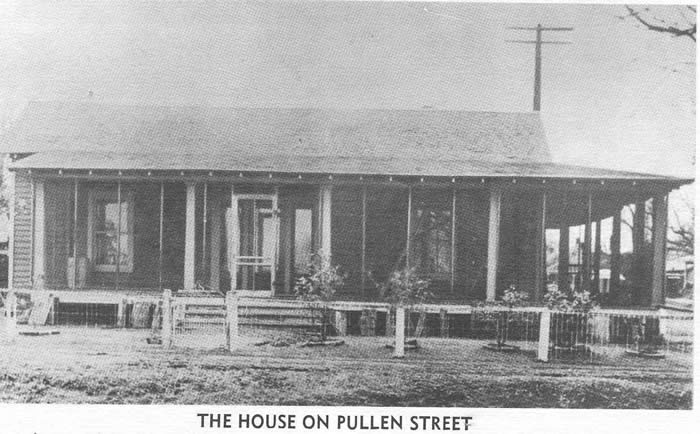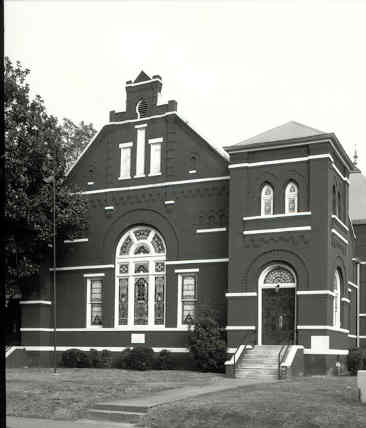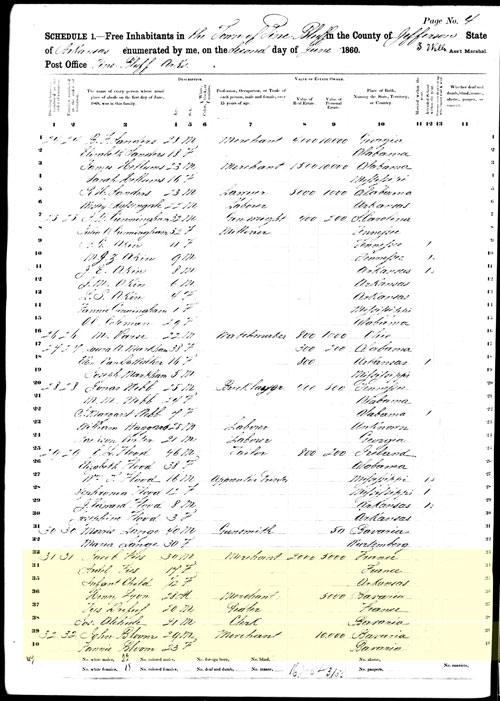History of the Pine Bluff Jewish Community
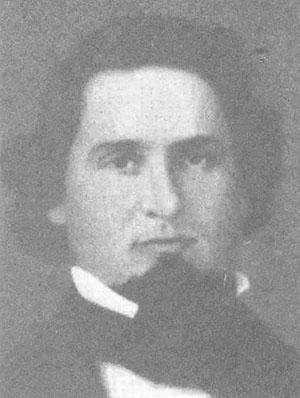
Isaac Altschul
The first Jews in the town settled in the 1840s. Though records were lost, 'tradition' states that the first Jew in Pine bluff was named Wolf, who died in New Orleans in 1917. He apparently operated a business and was active in community affairs (see this). After 1850, several Jews came to Pine Bluff to settle, open businesses and farm. Isaac Altschul (1825 – 1898) was among the first and he opened a dry goods store outside the town. Several of these settlers had opened businesses. A number of these Jews had been born in Bavaria, in Germany. Isaac Altschul paid poll tax in 1854. The next year, John Bloom (1), Jacob Bloom paid poll taxes; and also in 1855, Baker and Jacob Bloom paid tax on a horse. "Nathan Myers assessed land in 1858 in sections 7, 13 and 18 of Township 4 south ranges 11 and 12". Also in 1858, Henry Lyons & Jacob Fies came to Pine Bluff; in 1859 Lyons and Fies "assessed their property consisting of one town lot and $ 7,000 of merchandise in the firm name of Lyons & Fies." Levi & Myers was another firm on the tax books listed $ 12,000 in merchandise. Quite possibly these men were M. Levi and Gabriel (Gabe) Meyer. "Solomon Franklin and Aaron Reinach paid taxes in 1860."

Born in Bavaria, Gabriel "Gabe" Meyer (1834-1917) sailed from Antwerp, Holland in 1851 with his cousin Herman Meyer; that journey to New Orleans, Louisiana took 78 days; the ship was the Duchess de Brabent. He was in the mercantile busineass in Marion, Louisiana for four years. He was traveling to Grand Lake, Arkansas on horseback but was stymied in Pine Bluff by floodwaters and decided to stay. Meyer founded a store on Barraque Street, which became the main site for business in Pine Bluff. He also became a planter and landowner with twenty one plantations. Meyer served on the city council and the school board (for twenty five years). The 'father of the Pine Bluff school system', in 1921 an elementary school was named for him (in 2014 the school was torn down). He became involved with many organizations that strived for the growth or advancement of Pine Bluff. Meyer managed land deals for the public schools as well. (source is the Lemaster book referenced here ; pages 28, 57 and 182). Sailing list to Louisiana can be found on Ancestry.com.
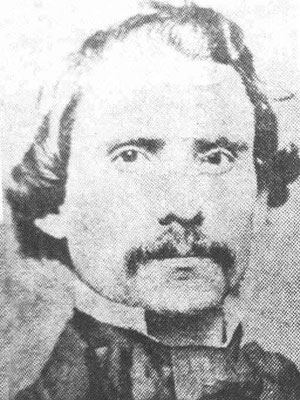
Solomon Franklin
During the American Civil War, the Battle of Pine Bluff was fought on 25 October 1863. Several of the Pine Bluff Jews fought for the Confederacy; nonetheless captured Jewish Union soldiers were well treated by their bretheren. After the War, there was an influx of Jews and by 1878 there were 250 Jews in Pine Bluff." "Sol Bloom paid taxes on 800 acres of land in Township 6 Range 7"; which had previously belonged to M.W. Lewis in 1861. John Bloom and Jacob Baker paid taxes on $ 1,600 of mechandise as the partnership of Baker & Bloom.
After the war, Jews began to form a congregation and in 1866 they formed Anshe Emeth (Men of Truth). Lay readers read the services. David Aschaffenberg was the first congregation President. A local B'nai Brith lodge was established. A cornerstone laying ceremony was held in October 1866 at 3rd Avenue and Laurel Street. Other Jewish fraternal organizations were represented by Kesher Shel Barzel (Bond of Iron) and the Free Sons of Israel. Both the Ladies Aid Society and a Ladies Relief Society provided charity to Jews. The Anshe Emeth congregation was chartered 13 March 1867 by the State Legislature and became the first Jewish Congregation in Arkansas (only five days before the chartering of the Little Rock's B'nai Israel congregation.
Services were held in a rented room on Pullen street while the synagogue was being built. In 1870 a Temple sisterhood was founded by Mrs. Sam Blumenthal and she served as it's president for many years. The synagogue was finished in 1871 and Jacob Bloch was hired as the first Rabbi. He taught in the public schools to supplement his salary and served the congregation until 1871. The congregation numbered 45 souls by 1873 and they had joined the Union of American Hebrew Congregations; it adhered to Reform Jewish principles. As the majority of congregants were German, the services were conducted in German until 1874. The Anshe Emeth Cemetery was vandalized in 1876.
Cotton farming 'was king' and Pine Bluff became a bustling town. A railroad linked to Little Rock in 1881; and by 1900 it was the third largest city in the state. In the late 1800s Jews moved to Pine Bluff to open stores to serve the farming community and Rabbi Ferdinand Becker began a religious school. The community accepted the members of Anshe Emeth as did the local churches. The congregation allowed locah churches use their Temple while church construction was going on. (Today the 'shoe is on the other foot' as the Jewish comgregation meets for services and Shabbat dinners at the First Presbiterian Church).
The tremendous growth of the congregation in the late 1800s' led to the need to build a larger house of worship. The rabbi at this time was Ferdinand Becker (who served the congregation from 1887 to 1898) but he left Anshe Emeth in 1898 and Joseph Kornfield (who served the congregation from 1898 to 1904) was the rabbi at the time the second temple was built. The larger brick building was located at the corner of West 2nd and Poplar streets, and it was completed in 1902. There were 133 members by 1907 and Anshe Emeth's income was almost $4,000. In 1917 there were 90 children in the religious school.
Please follow this link for color postcards of the second Congregation Anshe Emeth Temple.
About this time there many Eastern European immigrants to Pine Bluff. They preferred traditional Jewish practices; so they formed their own congregation. The Orthodox congregation B'nai Israel (Sons of Israel) was founded by 28 Jews and H. Bram became the first president. Without a rabbi, services were lay-led. For High Holy Days they hired a visiting rabbi or cantor and those services were held in a local Masonic Hall. Nearby Orthodox Jews would come to High Holy Day services with the B'nai Israel Congegation. The 1920s saw new immigration laws which stemed immigration from Eastern Europe and the Pine Bluff B'nai Israel Congregation began a decline. Many of it's members joined the Reform Anshe Emeth Congregation as they found this was a better match for their lifestyle. Weekly Orthodox services ceased in the 1930's; Rosh Hashanah and Yom Kippur services were held by the B'nai Israel congregation until the 1950s when the congregation disbanded. Many members then joined Anshe Emeth.
Anshe Emeth was blessed with 19 different rabbis between 1867 and 1967. In 1921 Rabbi Leonard Rothstein left his pulpit in Alexandria, Louisiana to come serve Anshe Emeth. He was outspoken and some of his changes led to a split in the Pine Bluff Congregation. Fifty eight members, including some leaders, broke away to found Temple Israel which met at the Shrine Temple and the Harmony club, a Jewish social club. Temple Israel didn't have a synagogue, they did hire a rabbi, Louis Brav. Rabbi Rothstein left in 1923 and Brav departed in 1924. There was much upheaval as Anshe Emeth suffered from financial hardship as many wealthy members had joined Temple Israel. Divisions were mended and the combined congregation hired Rabbi Mayer Lippman and by 1925 there were 110 contributing members.
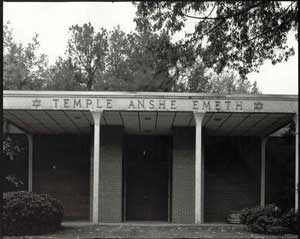
From the 1920s to the period after World War II, Anshe Emeth retained it's membership; in 1945 there were 100 members. Rabbi Morris Clarrk was Anshe Emeth's Rabbi from 1927 to 1949. However, the Jewish community began to decline so by the early 1960s, the congregation decided the large brick synagogue in downtown Pine Bluff was too big. So in 1961 a lot at Hickory and 40th streets was puchased. The congregation amassed enough money by 1967 to build a new, smaller synagogue. InMarch of that year, the congregation celebrated it's Centennial anniversary (see this).There were 85 members, many elderly. This facility was near the homes of the congregants.
At this time there were 26 children in the religious school. Rabbi Leslie Sertes came to the pulpit in 1970 and he stayed until the mid-1980s; Sertes was the last full time rabbi for Pine Bluff Jews. Then the congregation began to bring in rabbinical students from Hebrew Union College in Cincinnati to conduct services.
The farming economy in the Pine Bluff area began to change as mechanization reduced the number of farm workers needed and as those people left, so did the customer base of the stores of Anshe Emeth congregants. Also, the families that owned stores Barre, Bain's, Burt's, Cohen's, Levine's, Kahn's Jeweler's and Rosenwig's were aging and the next generation did not want to live in a small town and put in the long hours in retailing.Jewish-owned store closed and by 1985 there were only 69 members. The congregation sold the temple in 2003 to a local hospital, which converted the building into a nursing school.
Over the years the congregation opened it's doors to Christian congregations while their churches were being built; now (2014) the small group (about 10) meets at the First Presbyterian Church of Pine Bluff and a retired rabbi visits monthly for Shabbat services and dinner.

